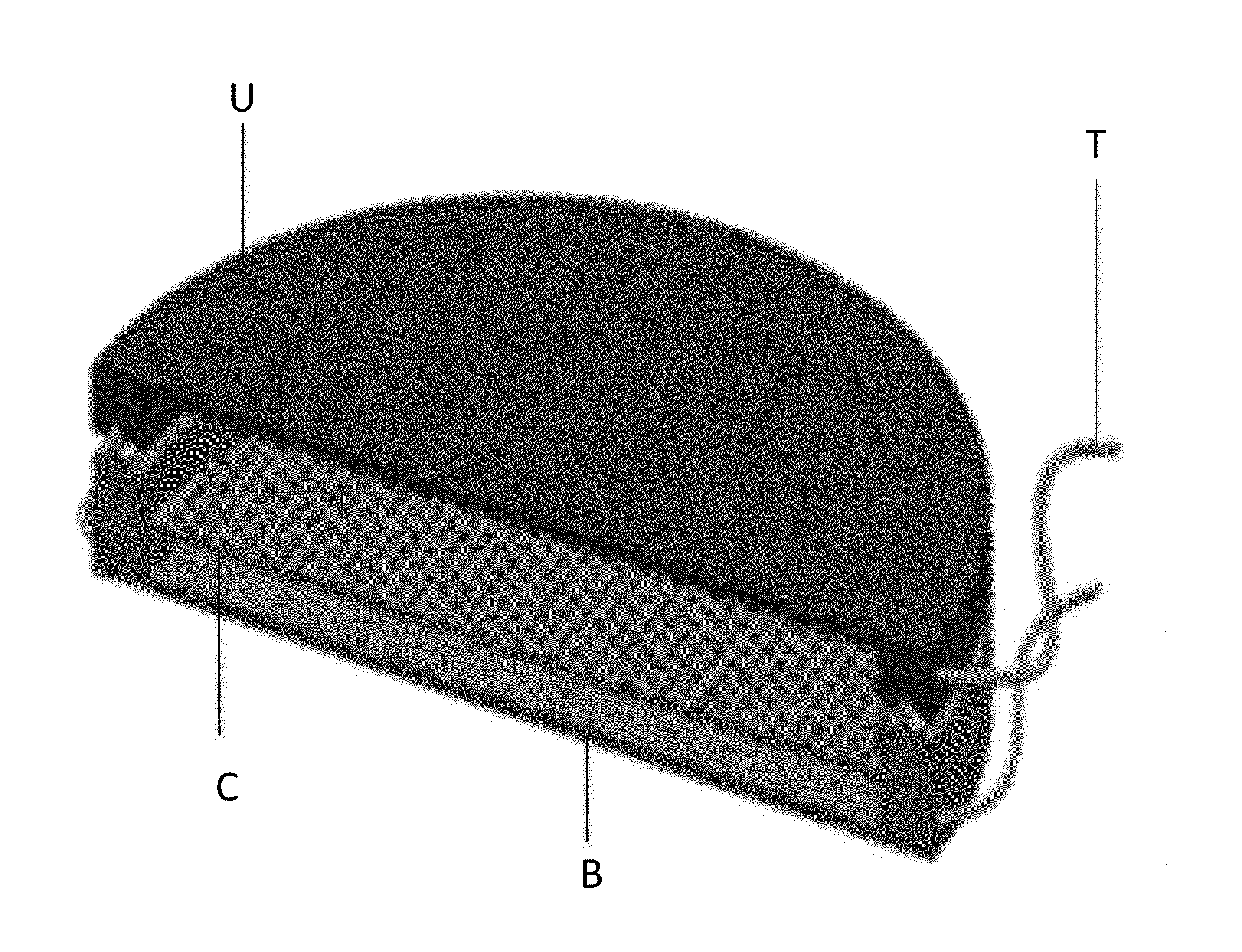Bioengineered human trabecular meshwork for biological applications
- Summary
- Abstract
- Description
- Claims
- Application Information
AI Technical Summary
Benefits of technology
Problems solved by technology
Method used
Image
Examples
example 1
Human Trabecular Meshwork Cell Culture
[0112]1. Primary Human Trabecular Meshwork (HTM) cells were purchased (from ScienCell Research Laboratories, Carlsbad, Calif.); or isolated from the juxtacanalicular and corneoscleral region of donor human eye tissue.
[0113]2. The HTM cells were plated in flasks, glass coverslips, and micropatterned 3-D micro- and nanostructured scaffolds coated with HTM biocompatible agents such as poly-L-lysine, gelatin etc., and cell proliferation compared; the HTM biocompatible coating which provided the optimal HTM cell proliferation was selected.
[0114]2.a. The HTM cells were plated in poly-L-lysine-coated 75 cm2 cell culture flasks (2 μg poly-L-lysine / cm2) and cultured in Improved MEM (Cellgro, Manassas, Va.) with 10% fetal bovine serum (ScienCell Research Laboratories, Carlsbad, Calif.).
or
[0115]2.b. The HTM cells were plated in gelatin-coated (75 cm2 cell culture flasks (1% sterile gelatin solution) and cultured in Improved MEM (Cellgro, Manassas, Va.) wit...
example 2
3-D Micro- and Nanostructured Scaffold Fabrication
[0123]To produce the scaffolds with varying dimensions of micro- and / or nanostructures, using standard photolithography techniques shown in FIG. 4, a 3-D micro- and nanostructured scaffold with an architecture (FIG. 3A; 3B; 3C; 9) very similar to the specific features of the TM observed in vivo. 1. A silicon wafer (FIG. 4; 2) was cleaned using Piranha (3:1 H2SO4:H2O2).
[0124]2. Rinsed with dionized water.
[0125]3. Then dried with nitrogen.
[0126]4. A release layer (FIG. 4; 1) was then spun on the wafer at 3000 rpm using a spin coater. In this example, Omnicoat™ treatment was used on previously cleaned silica wafer for the release layer (FIG. 4; a).
[0127]5. Baked on a hot plate at 200° C. for 1 min.
[0128]6. A substrate (in this example SU-8 2010) was applied by spin-coating to a final thickness of approximately 20 μm, (FIG. 4; b).
[0129]7. Then baked at 95° C. for 10 min.
[0130]8. Cooled to room temperature.
[0131]9. A resist is thus produc...
example 3
Culture of HTM Cells on SU-8 Scaffolds
[0140]1. SU-8 3-D micro- and nanostructured scaffolds were coated by soaking for 30 minutes in a HTM biocompatible coating agent (for example poly-L-lysine or gelatin) to promote HTM cell attachment.
[0141]2. Coated SU-8 3-D micro- and nanostructured scaffolds were removed and allowed to air-dry overnight in a sterile environment like a sterile tissue culture hood.
[0142]3. SU-8 3-D micro- and nanostructured scaffolds were allowed to rest at the bottom of a 24-well plate while preventing direct contact between 3-D micro- and nanostructured scaffold and the bottom of the 24-well plate. For the present invention, a structure was designed and constructed for preventing direct contact between 3-D micro- and nanostructured scaffold and the bottom of a cell culture plate. Aluminum tape rings were cut, autoclaved and placed around the borders of the previously sterilized scaffolds. These tape rings allowed the 3-D micro- and nanostructured scaffolds to r...
PUM
 Login to View More
Login to View More Abstract
Description
Claims
Application Information
 Login to View More
Login to View More - R&D
- Intellectual Property
- Life Sciences
- Materials
- Tech Scout
- Unparalleled Data Quality
- Higher Quality Content
- 60% Fewer Hallucinations
Browse by: Latest US Patents, China's latest patents, Technical Efficacy Thesaurus, Application Domain, Technology Topic, Popular Technical Reports.
© 2025 PatSnap. All rights reserved.Legal|Privacy policy|Modern Slavery Act Transparency Statement|Sitemap|About US| Contact US: help@patsnap.com



